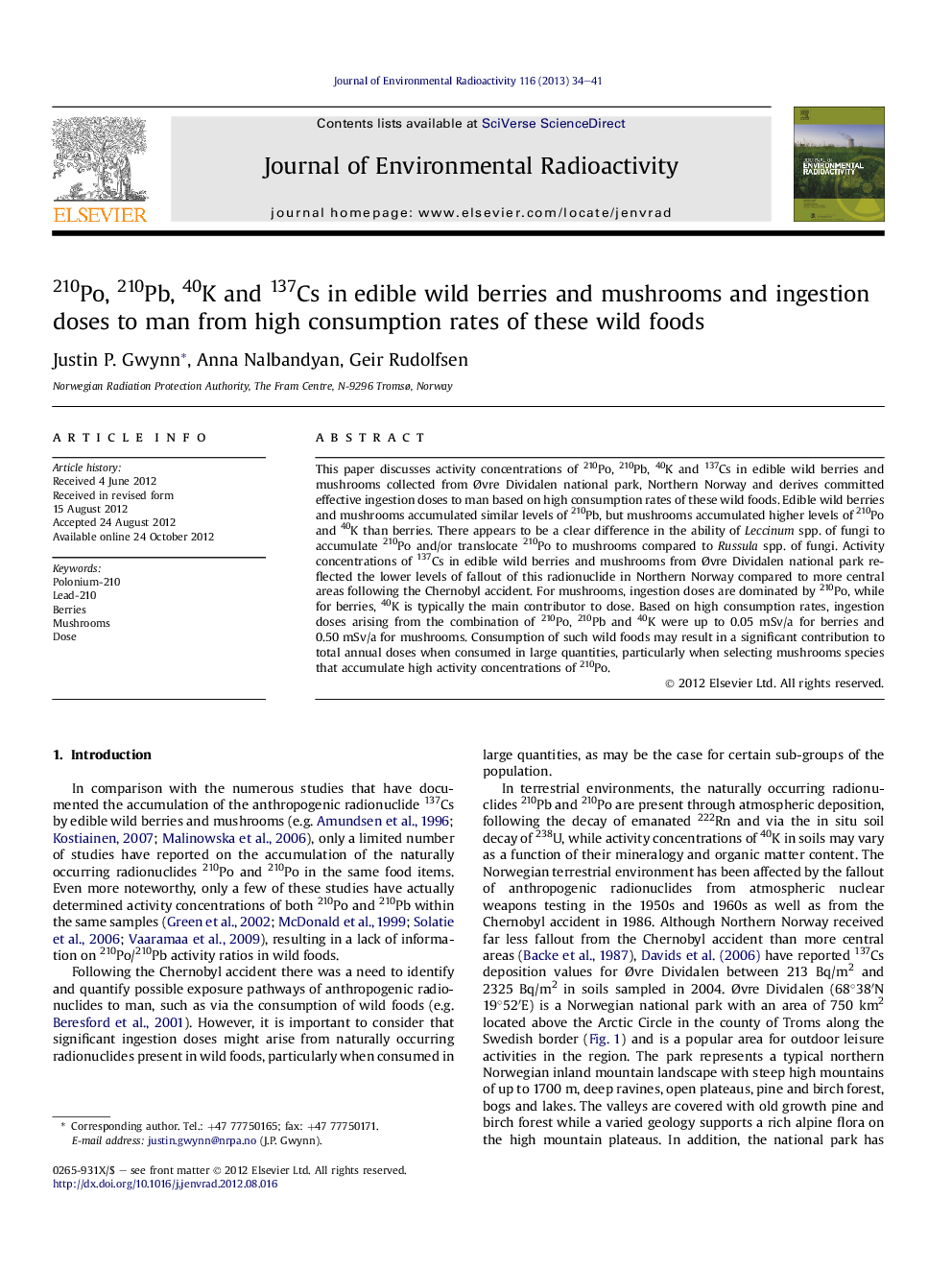| Article ID | Journal | Published Year | Pages | File Type |
|---|---|---|---|---|
| 1738288 | Journal of Environmental Radioactivity | 2013 | 8 Pages |
This paper discusses activity concentrations of 210Po, 210Pb, 40K and 137Cs in edible wild berries and mushrooms collected from Øvre Dividalen national park, Northern Norway and derives committed effective ingestion doses to man based on high consumption rates of these wild foods. Edible wild berries and mushrooms accumulated similar levels of 210Pb, but mushrooms accumulated higher levels of 210Po and 40K than berries. There appears to be a clear difference in the ability of Leccinum spp. of fungi to accumulate 210Po and/or translocate 210Po to mushrooms compared to Russula spp. of fungi. Activity concentrations of 137Cs in edible wild berries and mushrooms from Øvre Dividalen national park reflected the lower levels of fallout of this radionuclide in Northern Norway compared to more central areas following the Chernobyl accident. For mushrooms, ingestion doses are dominated by 210Po, while for berries, 40K is typically the main contributor to dose. Based on high consumption rates, ingestion doses arising from the combination of 210Po, 210Pb and 40K were up to 0.05 mSv/a for berries and 0.50 mSv/a for mushrooms. Consumption of such wild foods may result in a significant contribution to total annual doses when consumed in large quantities, particularly when selecting mushrooms species that accumulate high activity concentrations of 210Po.
► 210Po/210Pb activity ratios were typically less than one for berries. ► 210Po/210Pb activity ratios were all greater than one for mushrooms. ► Dose rates from mushrooms were dominated by 210Po and by 40K for berries. ► Wild foods can give a significant contribution to total annual ingestion dose.
